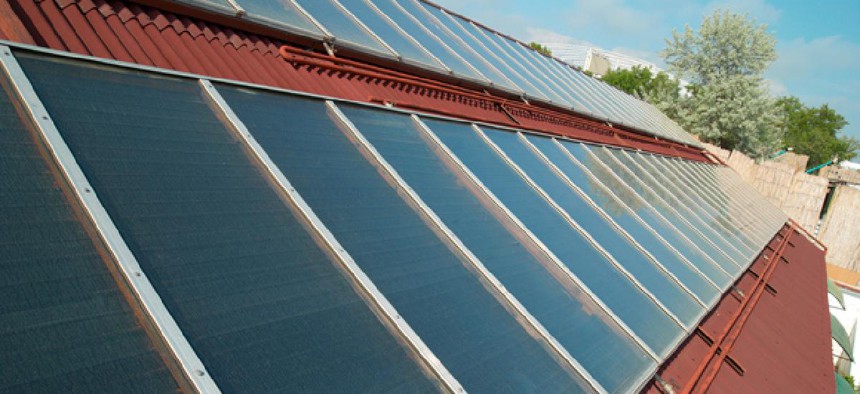Duplication in federal solar energy programs found minimal
GAO cites coordination by six agencies overseeing 65 initiatives.
Though overlap in federal programs has been criticized in recent years, a review of 65 solar energy programs spread over six major agencies found “no clear instances of duplicative initiatives” and uncovered evidence of regular dialogue among officials at separate agencies.
The Government Accountability Office in a report released earlier this week reviewed solar-related renewable energy projects -- a source of political controversy in the past year since revelations of a $535 million loan default by the bankrupt company Solyndra -- at the Agriculture, Defense and Energy departments along with the Environmental Protection Agency, the National Science Foundation and NASA.
“The initiatives are fragmented in that they are implemented by various offices across the six agencies and address the same broad areas of national need,” the auditors found. “However, the agencies tailor their initiatives to meet their specific missions, such as DoD's energy security mission and NASA's space exploration mission. Many of the initiatives overlapped with at least one other initiative in the technology advancement activity, technology type, funding recipient or goal. However, GAO found no clear instances of duplicative initiatives.”
The report was requested by Reps. Ralph Hall, R-Texas, chairman of the House Science, Space and Technology Committee; and Andy Harris, R-Md., chairman of that panel’s energy and environment subcommittee. It contained no recommendations, but the agencies generally agreed with the results.
Of the 65 projects, which cost some $2.6 billion in fiscal 2010 and 2011, more than half supported solar projects exclusively, while the rest sustained solar and other renewable energy technologies. Many are grants and contracts given to universities, industry, researchers and federal laboratories. Some of the funding came from the 2009 Recovery Act.
(Image via Vakhrushev Pavel/Shutterstock.com)
NEXT STORY: You Don’t Need to Solve for 100%




